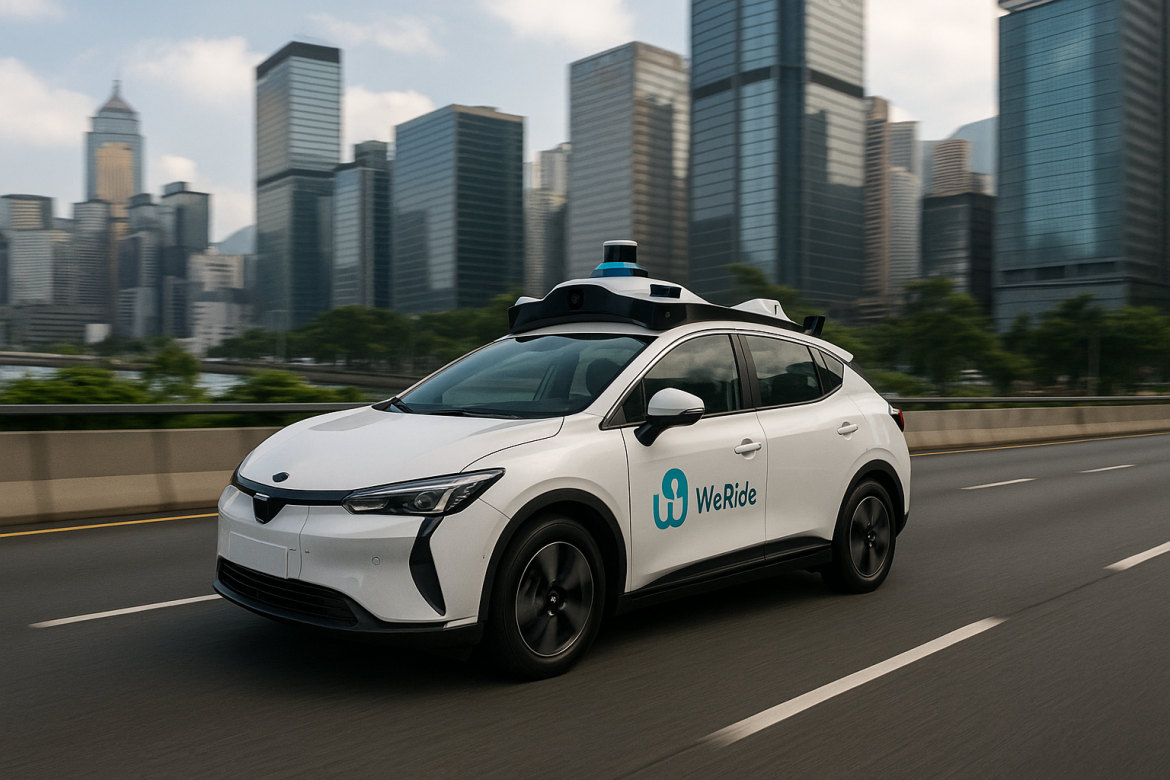Shares of WeRide began trading on the Hong Kong Stock Exchange on Tuesday, marking another step in China’s push to strengthen its global technology footprint while reducing reliance on US capital markets.
The Guangzhou-based autonomous vehicle developer is now listed on both the Nasdaq and Hong Kong’s main board, positioning itself at the intersection of artificial intelligence innovation and geopolitical strategy.
The dual primary listing expands access to mainland investors through the Southbound Stock Connect scheme, part of Hong Kong’s growing role as a bridge between China and global capital.
Dual listing signals shift in Chinese capital strategy
WeRide raised $308 million in its Hong Kong initial public offering, pricing shares at HK$27.10, slightly below their Nasdaq close on Monday.
The move aligns with a wave of dual listings by Chinese firms looking to tap both domestic and international markets amid tensions over US audit rules and delisting risks.
Pony AI, another Chinese robotaxi firm, also launched its Hong Kong debut on the same day. The two companies’ listings highlight investor appetite for AI-driven transportation and the city’s revived status as a global fundraising hub.
Southbound capital flows reached a record $110 billion in the first seven months of 2025, surpassing all of 2024, according to data from Wind cited by the South China Morning Post.
Mainland investors are showing increasing interest in AI and “new consumption” stocks such as Pop Mart and Labubu, helping lift the Hang Seng Index by about 32% this year, compared to a 22% gain for the Nasdaq Golden Dragon index, which tracks US-listed Chinese companies.
Robotaxis drive China’s next tech frontier
Founded in 2017 by former Baidu scientist Tony Han, WeRide operates in 30 cities across 10 countries, including Singapore, France, Spain, Saudi Arabia, and the United Arab Emirates.
The firm’s expansion underlines China’s leadership in developing autonomous driving technologies for global deployment.
Han has long argued that AI-driven transport can reduce accidents and congestion by eliminating human error.
Robotaxis, he believes, can fill labour gaps in ageing societies such as China, where demand for mobility services continues to rise even as the workforce declines.
WeRide’s technology portfolio extends beyond taxis. It includes robobuses, robosweepers, and other automated public service vehicles.
The company says automation can lower the high cost of drivers in developed markets, enabling cities to expand public transport systems and reduce emissions.
In the Middle East, WeRide operates autonomous vehicles through a partnership with Uber. It has also attracted investment from Singaporean ride-hailing firm Grab, which plans to launch robobuses in Singapore next year.
Similarly, Pony AI is collaborating with ComfortDelGro, while Baidu’s Apollo Go continues to expand globally, including pilot operations in Europe with Lyft.
Heavy R&D spending weighs on profits
Despite strong technological progress, profitability remains a challenge. WeRide reported revenue of $27.9 million for the first half of 2025, up 32% from the same period last year, but posted a net loss of $110 million.
Research and development costs reached $90 million during the period, close to the $107 million spent in all of 2024.
An HSBC report in July noted that hidden costs such as remote supervision, infrastructure, and tech support may delay profitability for up to eight years.
However, the bank projected that China would achieve commercial viability for robotaxis first due to faster adoption and government support for AI integration in transport.
China’s strong domestic supply chain also gives it an edge. Companies like Hesai Technology, the world’s largest maker of lidar sensors used in autonomous vehicles, help keep development costs lower than competitors in the United States and Europe.
A global benchmark for AI mobility
WeRide’s shares fell nearly 12% on their first day of Hong Kong trading, following a 40% decline since its US IPO. Pony AI’s shares also dropped about 14%.
Despite the weak debut, analysts view the listings as a longer-term strategic play, securing access to Chinese investors while maintaining international visibility.
The dual listings of WeRide and Pony AI reflect both ambition and necessity: a strategy to ensure funding continuity amid geopolitical uncertainty while reinforcing China’s leadership in the global robotaxi race.
As global ride-hailing giants, including Uber, Grab, and Lyft, increasingly partner with Chinese developers, the country’s autonomous driving sector is evolving from a domestic experiment into a global export of AI-powered mobility.
The post China’s robotaxi race goes global as WeRide debuts in Hong Kong appeared first on Invezz

